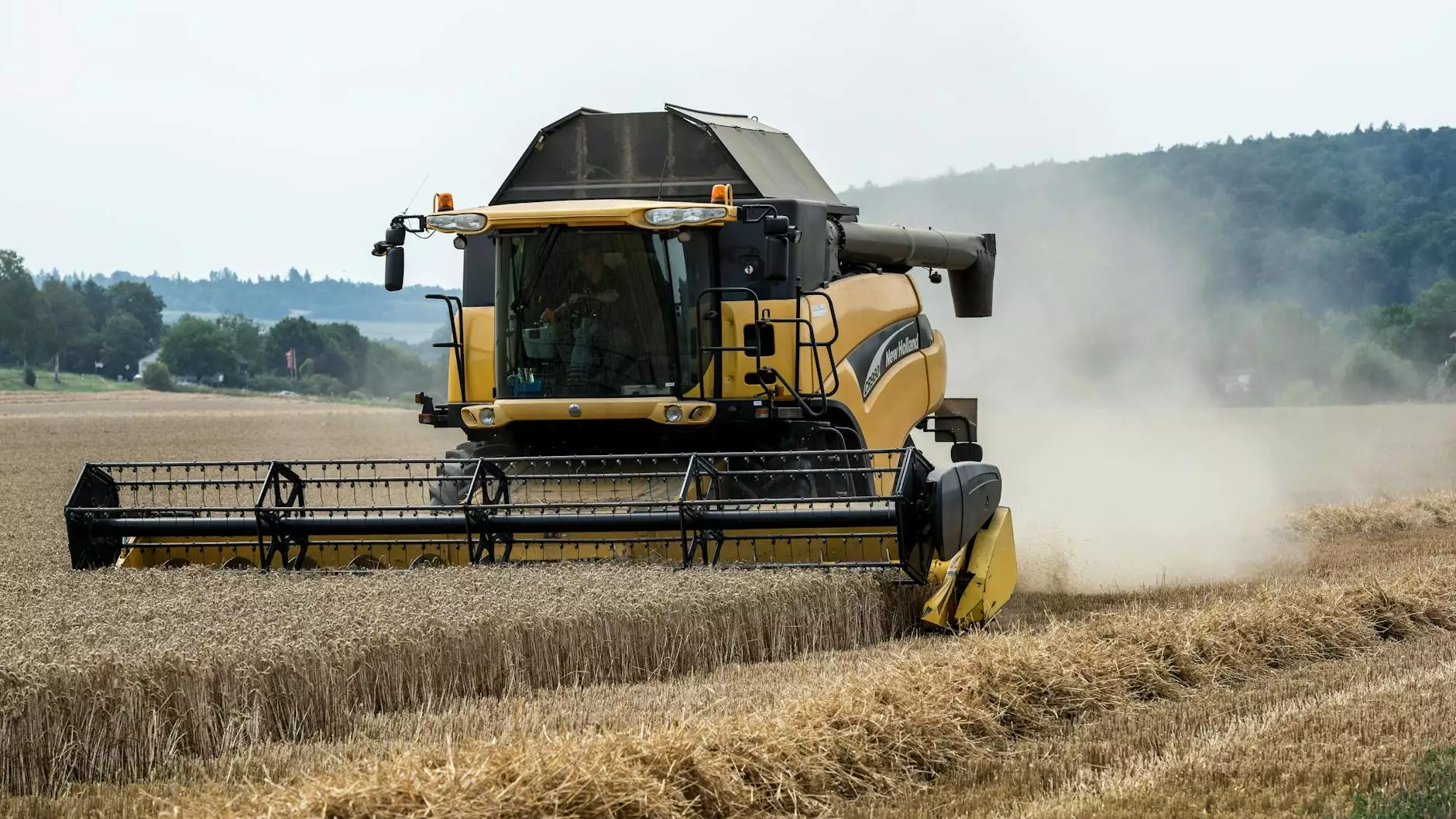The Importance of Moisture Content of Cereals in Agriculture

Moisture content of cereals is a vital factor that plays a significant role in agriculture, particularly in the production and storage of grains. Grains such as wheat, corn, rice, and barley serve as the backbone of the food supply and contribute immensely to economies worldwide. Understanding the moisture content of these cereals is essential for farmers, grain traders, and food processors alike, as it can affect everything from market pricing to the quality of harvests.
What is Moisture Content?
Moisture content refers to the amount of water present in a substance, expressed as a percentage of the total weight. For cereals, moisture is a critical parameter that can determine the quality, safety, and freshness of the grain. High moisture content can lead to spoilage and the growth of harmful molds, while low moisture levels can cause grains to become too dry, affecting their quality and usability.
Measuring Moisture Content in Cereals
Accurate measurement of moisture content of cereals is crucial. Here are common methods used in the industry:
- Oven Drying Method: This is one of the most reliable methods where a sample of grain is dried in an oven, and the weight loss is measured to determine moisture content.
- Moisture Meters: These electronic devices provide quick and accurate readings of moisture content in cereals.
- Karl Fischer Titration: This chemical method is employed to measure moisture content with high precision.
Why Moisture Content Matters
The moisture content of cereals influences several factors critical to agricultural success:
1. Quality of Harvest
Higher moisture levels during harvesting can lead to lower grain quality due to the risk of spoilage and fungal infections. It is important for farmers to monitor and manage moisture content to ensure that cereals reach optimal quality standards.
2. Storage and Preservation
Grains with too much moisture require careful management. They are prone to spoilage, which can lead to economic losses. Proper moisture control during storage is essential to prevent contamination and maintain grain quality.
3. Market Value
Grains with optimal moisture levels tend to fetch a higher price in the market. Farmers and producers who can manage moisture content effectively are often rewarded financially. Buyers often test moisture levels before purchase, as too high or too low can affect the buying decision.
Impacts of Improper Moisture Levels
Improper levels of moisture can have dire consequences:
- Mold and Fungi Growth: High moisture levels can promote the growth of molds and fungi, which produce mycotoxins. These toxins can contaminate food supplies and be hazardous to health.
- Loss of Nutritional Value: Excess moisture can lead to the leaching of essential nutrients from grains, affecting their health benefits.
- Economic Loss: Farmers facing issues with moisture content can incur significant financial losses due to unsellable crops.
Managing Moisture Content: Best Practices
Maintaining the right moisture levels involves careful planning and execution. Here are some best practices that can help in managing the moisture content of cereals:
1. Pre-Harvest Planning
Understand the moisture levels typical for your crops and the ideal timing for harvest. Farmers should conduct regular moisture tests during the growing season to predict the optimal harvest time.
2. Using the Right Equipment
Investing in quality farming equipment that is suitable for moisture management can make a significant difference. Grain dryers, for example, can help in effectively reducing moisture levels to safe parameters.
3. Regular Monitoring
Implementing a routine check for moisture content with reliable moisture meters ensures proactive management of moisture levels both in the field and during storage.
4. Proper Storage Techniques
Utilize appropriate storage facilities that can control humidity and ensure that grains are kept at optimal moisture levels. This includes using aeration systems and moisture control additives.
The Role of Farm Equipment in Maintaining Moisture Content
Farm equipment plays an essential role in managing the moisture content of cereals. Here’s how:
1. Grain Dryers
These machines are indispensable during harvest time. They reduce moisture content quickly, ensuring that the grains remain in the best possible condition until they're sold or processed.
2. Harvesters with Moisture Sensors
Incorporating technology into farming equipment allows for continuous moisture measurement during harvest. This ensures that grains are cut and collected at their optimal moisture levels.
3. Improved Storage Solutions
Modern storage solutions equipped with humidity control technology can help keep moisture levels stable, preventing spoilage and maintaining product quality.
Impact of Climate and Weather Conditions on Moisture Content
Outside factors such as climate change and unpredictable weather patterns can also influence moisture levels in cereals:
1. Rain and Humidity
Excessive rainfall can increase moisture levels significantly, jeopardizing the quality of harvests. Keeping weather forecasts handy and adjusting harvest plans based on these can help mitigate risk.
2. Drought Conditions
On the contrary, drought can cause moisture levels to drop significantly, which affects yield quantity and quality. Farmers must adjust their practices, such as irrigation, to counteract these effects.
Conclusion
In summary, the moisture content of cereals is a fundamental aspect of agricultural success that impacts quality, storage, and marketability. By employing best practices in moisture management, utilizing advanced farming equipment, and adapting to climatic changes, farmers can enhance their productivity and safeguard their investments. At TSGC Inc., we understand the critical importance of moisture management in farming equipment and offer solutions that help farmers maximize their output while minimizing losses. Emphasizing the importance of moisture content will not only support producers in improving the yield and quality of their harvests but will also contribute to the overall sustainability of our food systems.



